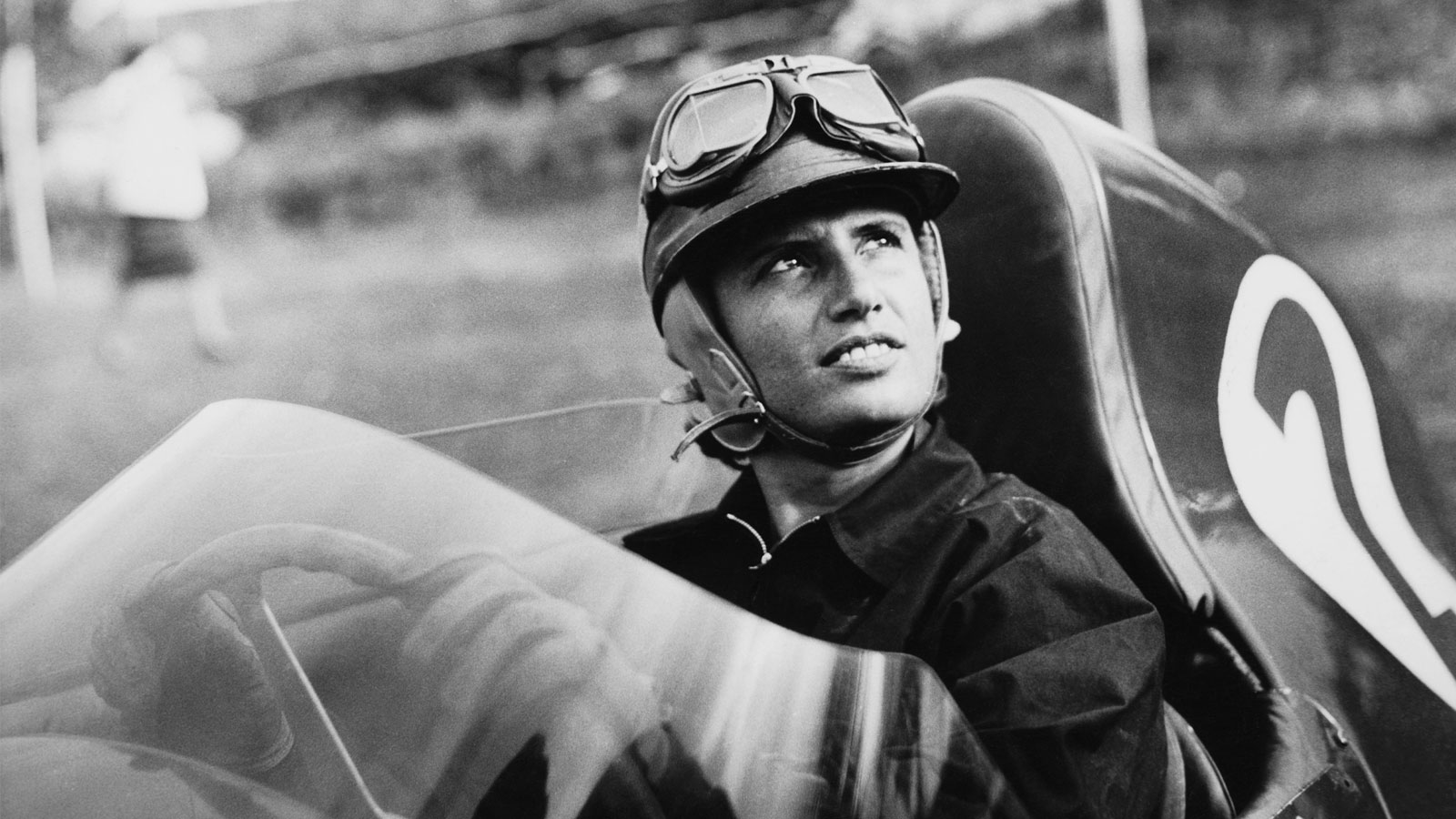
FEARLESS
Think of Formula One these days and no doubt an image is conjured of sophisticated engineering and drivers being guided around a track by a series of computers.
It’s a far cry from the cut and thrust of motor racing thirty years ago let alone sixty years ago, which is when Maria Teresa de Filippis became the first woman to compete in Formula One.
De Filippis made her debut in the 1958 Belgian Grand Prix at Spa, posting her best ever Grand Prix finish of tenth, driving a Maserati 250F. Argentine racing legend Juan Manuel Fangio had claimed his fifth world championship the previous year driving an identical car.
When interviewed in 2006 and asked what she remembered most about racing in her first Grand Prix championship? De Filippis answered: “It was fantastic – I didn’t think about the result at all – but it wasn’t a big step up. I’d been driving cars with progressively bigger and bigger engines and in those days the top drivers took part in other events – sports cars, hill climbing, endurance races – so right from the start I’d been competing against F1 drivers.”
The youngest of five children, Maria Teresa de Filippis was born on November 11th 1926 in Naples into an aristocratic family that owned the city’s 16thcentury Palazzo Marigliano and the Palazzo Bianco near Caserta. A keen horsewoman, she was inspired to turn to four wheels after her brothers challenged her to prove she could drive a car as fearlessly as she could ride a horse. After training on the Amalfi coast she entered her first race – the Salerno-Cava dei Tirreni event, winning her class and finishing second overall, driving a Fiat 500 and aged 22.
The Italians’ have a saying “Prendere la palla al balzo”, which literally translates as “take the ball at the bounce” – seize the opportunity. An independent, almost bloody-minded character, de Fillippis was soon winning races across Italy. In 1954 she f inished a s r unner-up i n t he Italian Sports Car Championship, racing her own Urania-BMW, a Giaur, then a Maserati brothers’ OSCA MT4.
Recognising her potential, Maserati employed de Fillippis as a works driver, racing their cars. Her car had to be adapted with special padding so that the diminutive de Filippis, who stood at only 5ft 2ins could reach the pedals. In 1956 behind the wheel of a Maserati 200S she weaved her way from the back of the grid to finish second in a race supporting the Naples Grand Prix.
It was performances like this that won her many friends, including the great champion Fangio. During the same 2006 interview de Filippis recalled Fangio telling her: “You go too fast, you take too many risks” . . . “I wasn’t frightened of speed, you see, and that’s not always a good thing. He worried I might have an accident.”
There were indeed a few occupational hazards that required careful navigation, but not always on the track. De Filippis’s distinction did little to change certain attitudes within racing, as witnessed when, following her Belgian debut, she was prevented from competing in the next race – the French Grand Prix. The race director reportedly saying, “The only helmet that a woman should use is the one at the hairdressers.” This was the only race that de Filippis was prevented from entering, mostly it wasn’t prejudice she encountered only surprise at her success.

Unlike today’s Formula One, there was camaraderie between drivers, they travelled together and stayed in the same hotels. It was the same kind of spirit shown by Second World War pilots, as it was highly possible that, as then, some of your friends might not return. 1958 was a particularly tragic year in Formula One claiming the lives of several drivers.
In 1959 de Filippis left Maserati to join the Behra Porsche RSK team. Tragically, Porsche team leader Jean Behra died whilst driving in the sports car support race for the 1959 German Grand Prix at Avus. De Filippis was due to compete in this race, but handed the drive to the mercurial Frenchman as it was his Formula 2 Porsche she was due to race in, Behra was without a drive having been sacked by Ferrari for punching their team manager.
De Filippis learned of Behra’s death over the radio, devastated she decided on the spot to quit the sport. Her Grand Prix career amounted to only five race meetings, four in 1958 and one in 1959. At two of those meetings she failed to qualify for the race. Of the three races she started, she retired from two and finished the other in tenth place.
Maria Teresa de Filippis died in January 2016 aged 89. She will be remembered as a pioneer in motor racing, a sport dominated by men. It took nearly two decades for another woman to sit behind the F1 steering wheel. Fellow Italian Lella Lombardi remains the only female to have finished a World Championship Formula One race in a point-scoring position. Three other women, Britain’s Divina Galica, South Africa’s Desire Wilson, and Italy’s Giovanna Amati have entered, but none has managed to reach a place on the final grid.
In 2006 when asked if she was surprised more women hadn’t followed her example de Filippis replied: “A bit. Maybe they just don’t feel like it. Then, of course, there is the question of money. Many backers don’t believe that a woman can compete on equal terms. It’s a shame because I think there would be huge interest if a woman was given a chance in Formula One.” ![]()
Greensquare is a registered company in England.
© Greensquare 2024.
“Greensquare” and “Green Square” are the registered trademarks of Greensquare Brand Design Limited. All rights reserved.
Privacy Policy Sitemap DBA Member
Greensquare Brand Design Ltd
1745 Warwick Road
Knowle, Solihull
West Midlands B93 0LX
Find us on Google Maps
Subscribe to Drive
General enquiries: hello@gsbd.co.uk
New business: phil@gsbd.co.uk

